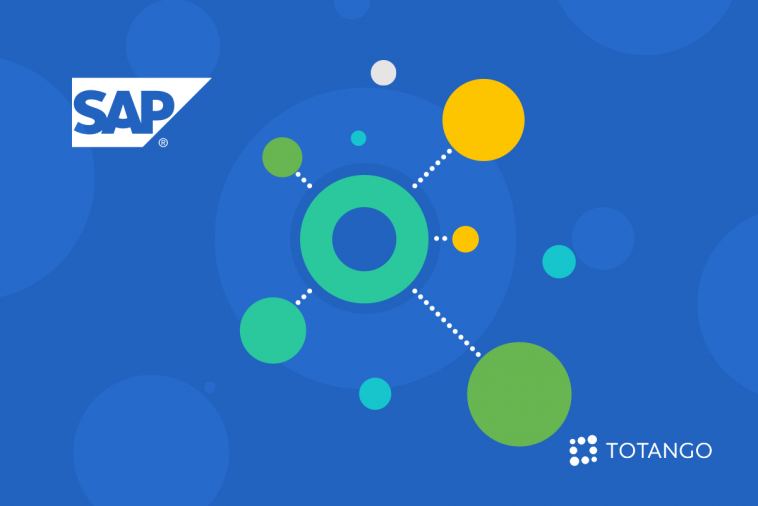- Like
- SHARE
- Digg
- Del
- Tumblr
- VKontakte
- Flattr
- Buffer
- Love This
- Save
- Odnoklassniki
- Meneame
- Blogger
- Amazon
- Yahoo Mail
- Gmail
- AOL
- Newsvine
- HackerNews
- Evernote
- MySpace
- Mail.ru
- Viadeo
- Line
- Comments
- Yummly
- SMS
- Viber
- Telegram
- JOIN
- Skype
- Facebook Messenger
- Kakao
- LiveJournal
- Yammer
- Edgar
- Fintel
- Mix
- Instapaper
- Copy Link
When SAP, one of the world’s largest enterprise software companies, went in search of a way to improve customer retention and expansion, they chose a data-driven customer engagement model. SAP, whose products play a role in 77% of the world’s transactional revenue, managed to implement a customer-centric approach across its vast network by identifying a series of key customer metrics and using them to trigger timely and effective engagements.
Steps to Successful Data-Driven Customer Engagement
Today’s conditions reward enterprises that can deliver repeated customer value over a series of renewal cycles that spread the value of a relationship over years of mutual growth. Knowing this, SAP pursued a three-step customer-centric approach, guided by data:
- Understand the customer
- Turn understanding into action
- Scale action to efficiently retain customers
| How it Started | How it’s Going |
| >1,200 Customer Success team members | >13k employees contributing to Customer Success |
| 11 global lines of business with diverse solutions | 11 cloud lines of business harmonized |
| 41k cloud customers | >83k cloud customers managed consistently |
1. Understand the Customer
SAP’s effort to improve customer lifetime value began with a realization that the company needed to better understand its customers. While SAP was awash with customer information after a number of business acquisitions, their customers did not see a single company but rather felt they were a part of two or more organizations. In one case, customers thought they were either a SuccessFactors or Ariba customer, but in fact, they were both. Key insights were hidden across these different Cloud and on-premise solutions, making it impossible for SAP to easily access, share, and analyze customer usage, health, and satisfaction.
In search of a “system of truth” that would allow the organization to present a consistent approach across offerings and teams, SAP worked to unify their approach, make customer data more accessible and adopt a consolidated set of metrics that would turn this data into action.
2. Turn Understanding into Action
Using customer data to guide its strategy, SAP focused their attention on the initial stages of the customer journey—onboarding and adoption. These early product experiences can have a profound impact on a customer’s likelihood to renew, and accelerating the time to value is an established way to increase retention.
In the initial stages of their customer’s journey, SAP prioritized the delivery of welcome messages and ensured customers had access to resources and support, and understood how to establish basic governance around the product. The company also used a customer success platform to closely follow the early indicators of successful product adoption, focusing on product usage and engagement measurements such as login rates, engaged usage rates, feature usage rates, Net Promoter Scores (NPS), email opens, actions, and click-through rates.
By gathering and sharing this customer information across the breadth of the company, SAP was able to introduce a consistent message throughout its product lines. Every customer was given the impression they were dealing with a single entity and not a series of unrelated divisions.
3. Scale Action to Efficiently Retain Customers
Introducing Customer Success best practices at scale means finding significant operational efficiencies. A quality customer success platform offers this, with an emphasis on digital communication powered by customer data insights.
SAP was able to reduce an initial store of more than 160 use cases down to around 12 key indicators. From these indicators, SAP implemented a standardized series of customer data triggers that would either prompt a Customer Success Manager to engage the client or trigger pre-designed digital campaign materials to capitalize on potential expansion opportunities or act to safeguard against potential churn. Any movement against benchmarked customer health data points triggered by real-world product usage and engagement measures produced an immediate response. Adopting a data-driven customer management model allowed SAP to pursue customer growth as a series of repeatable goal-based KPIs and achieve the following:
- >5000 average SuccessPlays completed each month
- >7000 average touchpoints added per month
- 96% of targeted campaign messages delivered
- 9.1 end-user satisfaction
Data-Driven Goals Support the Customer Journey
By embracing the “customer-first” model of customer success, SAP was able to improve the customer experience and create alignment throughout the customer journey. To do this, SAP needed a harmonized framework for Customer Success Management. This framework allowed SAP to:
- Break down internal data siloes so that every employee had access to holistic customer data
- Improve the time to go live by providing valuable data regarding the onboarding process
- Automate customer messaging and touchpoints
- Standardize actions to improve adoption and mitigate consumption risks
- Collaborate, strategize, and document actions as a team
- Provide executives with valuable KPI insights
Use the Right Data to Guide the Right Action
Your customer success platform is integral to the effectiveness of your data-driven customer engagement plan. As with the product used by SAP, your platform needs to reliably capture and organize a range of data from across the breadth of an enterprise and apply leading business metrics in order to make use of that information.
Here are the capabilities SAP desired in a solution:
- Customer Data and Transactions
- Customer Analytics and Reporting
- Customer 360
- Monitoring and Early Warning System
- Workflow Management
- Communication and Response Management
- Collaboration
Consider the above qualities when searching for a CS platform to take the mystery out of customer retention and turn the CS process into a series of workflow practices to anticipate needs and deliver value through relevant engagements. When you are trying to introduce a customer-centric philosophy across an enterprise, the reliable, accurate customer understanding you gain from a CS platform is invaluable.
SAP—A Data-Driven Customer Engagement Success
The successful adoption of data-driven customer engagement at SAP is an admirable cultural and technological achievement. They proved that the right customer success platform can introduce data efficiencies that break down enterprise silos. SAP was able to make that transition by consolidating its approach and identifying key data-driven outcomes to define customer success.
| We sat down with SAP to learn more about how they leverage data to drive their customer engagement successes. Check out the Q&A here. |
In these challenging times, you can’t afford to buy before you try. Get started for free today with Totango. Scale your customer success efforts and create greater alignment to deliver a powerful customer experience.



